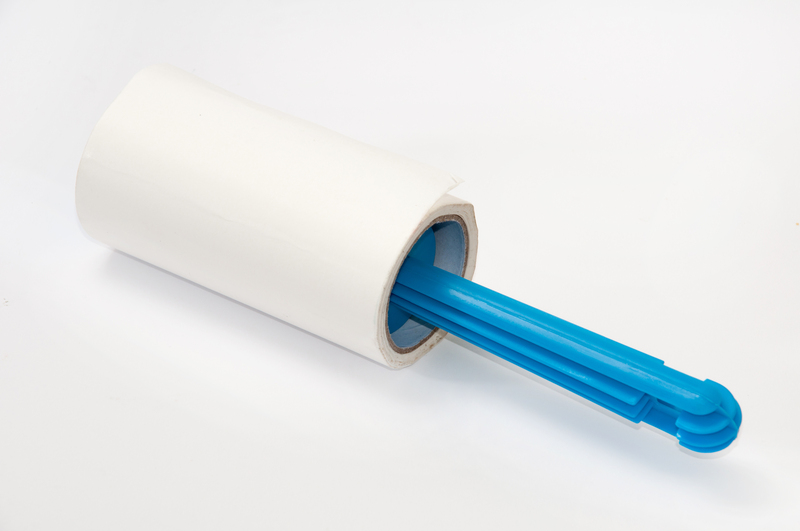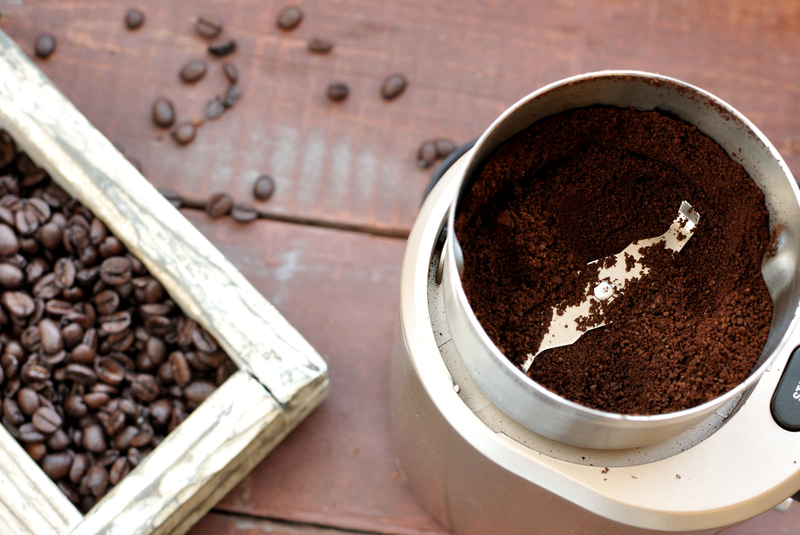Make Your Stovetop Shine: How to Remove Burnt-on Residue
Posted on 23/05/2025
Make Your Stovetop Shine: How to Remove Burnt-on Residue
Is your kitchen losing its sparkle because of stubborn, burnt-on residue on your stovetop? Whether you're a passionate home chef or only cook on occasion, it's almost inevitable to end up with spills and stubborn scorch marks. Nevertheless, a radiant, clean stove can immediately elevate the look and feel of your kitchen. In this comprehensive guide, we'll show you how to remove burnt-on residue from your stovetop, restore its shine, and keep it cleaner for longer--using safe, practical, and effective methods.

Understanding Your Stovetop: Types and Cleaning Needs
Before you break out the scrubbing pads, identifying your stovetop type is crucial for choosing the right cleaning method and products. The main categories include:
- Gas Stovetops: Characterized by removable cast-iron grates and burners, gas stoves are durable but can be tricky to clean due to recessed surfaces.
- Electric Coil Stovetops: With prominent coils and removable drip pans, these can accumulate burnt-on food underneath the coils.
- Glass or Ceramic Stovetops: Sleek and stylish, these require gentle cleaning to avoid scratches but can show every speck of residue.
- Induction Stoves: Usually have glass surfaces that need gentle, specialized cleaning.
Knowing your stovetop's material will ensure you don't damage it during the cleaning process.
Why Burnt-On Residue Happens
Burnt-on grime is usually a result of food or spills that weren't wiped up quickly enough and then got repeatedly heated. This causes the residue to caramelize, harden and stubbornly adhere to the surface--even everyday wiping won't budge it.
The Importance of Removing Burnt-On Stains
Neglected burnt-on residue not only makes your kitchen look less appealing but can also:
- Lead to persistent odors
- Affect the efficiency and safety of your stove
- Attract pests
- Potentially discolor or damage stove components
*With the right techniques, you'll restore both cleanliness and functionality to your stovetop.*
What You'll Need: Essential Tools and Supplies
Gather these supplies before tackling your stove cleaning:
- Baking soda
- White vinegar
- Dish soap
- Soft sponges and microfiber cloths
- Plastic scraper or spatula
- Old toothbrush
- Non-abrasive scrub pads
- Spray bottle
- Optional: Commercial stovetop cleaner (safe for your stove type)
- Optional: Razor blade scraper (for glass tops only, use with caution!)
- Latex gloves (to protect sensitive skin)
Tip: Always double-check your manufacturer's manual for specific cleaning recommendations and warnings.
How to Remove Burnt-On Residue: Step-by-Step Guides for Every Stovetop
1. Gas Stovetop Cleaning
- Step 1: Turn off the stove and make sure all surfaces are completely cool.
- Step 2: Remove grates and burner caps. Soak them in hot, soapy water for at least 30 minutes.
- Step 3: While grates soak, sprinkle baking soda generously on stubborn spots and spray with a mix of vinegar and water. Let it fizz for 15-20 minutes.
- Step 4: Use a soft scrub pad or plastic scraper to gently lift the residue. If burned bits persist, reapply soda and vinegar paste and let sit longer.
- Step 5: For nooks and crannies, use an old toothbrush. Wipe away with a damp microfiber cloth.
- Step 6: Clean and dry the grates and burner caps, then reassemble them.
2. Electric Coil Stovetops
- Step 1: Disconnect power to the stove for safety. Carefully remove coils (refer to your manual).
- Step 2: Clean beneath the coils--the drip pans usually collect the worst burnt-on residue.
- Step 3: Soak drip pans in hot, soapy water, then sprinkle tough stains with baking soda, adding a spritz of vinegar. Wait 20 minutes and scrub with a non-abrasive pad.
- Step 4: Wipe the rest of the stove's surface with warm, soapy water. For persistent spots, repeat the baking soda paste process.
- Step 5: Dry all parts completely before reassembling coils and pans.
3. Glass or Ceramic Stovetops
- Step 1: After the stove cools, wipe it down with a damp cloth to remove any loose debris.
- Step 2: Sprinkle baking soda over the burnt-on residue. Dampen a cloth with hot water and drape it over the stains for 10-15 minutes.
- Step 3: Using a gentle circular motion, rub the stains with the damp cloth.
- Step 4: For severe, stubborn stains: use a dedicated glass stove razor scraper at a _very_ low angle, carefully scraping off the residue without scratching the glass.
- Step 5: Wipe down with vinegar and buff dry with a microfiber towel for a streak-free shine.
- Step 6: If desired, finish with a specialty stovetop polish.
4. Induction Stove Cleaning
- Step 1: Unplug or turn off the power source for safety.
- Step 2: Use a soft sponge and mild detergent to remove surface grime.
- Step 3: Treat any burnt-on spots with a baking soda paste. Allow it to sit for 10-15 minutes. Wipe and buff to a shine.
- Step 4: Avoid abrasive pads to prevent scratching the delicate surface.
Natural vs. Commercial Cleaners: What Works Best?
Many people are seeking non-toxic and eco-friendly cleaning methods for their kitchen appliances. While there are effective commercial products specifically formulated for each stove type (such as Bar Keepers Friend or Weiman Glass Cook Top Cleaner), you may find natural solutions like baking soda and vinegar are highly effective--especially if used regularly.
Pros of natural cleaning agents:
- Gentle on surfaces and the environment
- Safe for food areas
- Low cost and readily available
When to use commercial products: For exceptionally resilient stains or when your stovetop manufacturer recommends a specialist product. Always follow the label instructions closely.
Advanced Cleaning Tips: How to Remove Heavy Burnt-on Residue
- For thick, carbonized deposits: Soak a paper towel in hot vinegar, place it over the area, and let it sit for up to 30 minutes. This can soften the toughest burnt-on grime.
- Use a paste of baking soda and hydrogen peroxide (apply, let sit for 15 minutes). This is especially effective on grease-based, dark stains.
- Combination method: For layered stains, intersperse baking soda paste applications with careful scraping by a plastic or silicone tool.
Pro tip: Never use steel wool, wire brushes, or harsh chemicals (like oven cleaner) on any stovetop, especially glass, as these will scratch and dull your surface.
Prevent Future Burnt-On Residue: Proactive Care Tips
- Wipe spills immediately. If something overflows, wait for the stove to cool and clean it promptly before it bakes on.
- Use pan lids and splatter guards to prevent stray droplets and spills.
- Deep clean weekly: Incorporate a thorough wipe-down and a gentle scrub of grates, trays, and burners into your regular routine.
- Don't let residue accumulate: Address small stains and crumbs before they become larger challenges.
- Invest in specialty stovetop protectors or liners (for gas and electric models) to catch spills and make cleaning easier.
Frequently Asked Questions (FAQ) on Stovetop Cleaning
How often should I clean my stovetop?
For best results, perform a gentle cleaning after every use to prevent buildup. Conduct a deep cleaning weekly or as needed depending on cooking frequency.
Is it safe to use a razor scraper on my glass cooktop?
Yes--if done carefully. Always use a dedicated stove razor scraper, hold it almost flat, and avoid pressing too hard. Never use chipped or rusty blades.
Can I use bleach or ammonia to clean burnt-on stove stains?
No, avoid strong chemicals like bleach or ammonia as they can corrode metal, damage glass, and leave toxic residues. Stick to food-safe methods.
How do I clean control knobs and panels?
Remove knobs (if possible) and soak them in soapy water. Wipe control panels with a damp, soapy cloth and avoid excess moisture to prevent damage to electronic parts.
What's the best way to get rid of stubborn grease on stovetops?
Degrease first with hot, soapy water. If needed, apply a baking soda-vinegar paste or a dedicated degreasing product. Let sit, scrub gently, and wipe clean.

Conclusion: Enjoy Your Gleaming, Burnt-Free Stovetop
A clean stovetop isn't just a matter of aesthetics--it's integral to better cooking and a fresher kitchen atmosphere. With the right techniques and regular care, you'll banish even the most persistent burnt-on stains and keep your stove as the shining centerpiece of your kitchen.
Remember:
- Act fast after spills to prevent hard residue.
- Choose gentle, food-safe cleaners, whether natural or commercial.
- Use the proper methods for your stove type to avoid damage.
Follow this guide and your stovetop will not only be clean--it will shine like new, making cooking more enjoyable every day!
Related Resources
- Department of Energy: Appliance Cleaning Tips
- Consumer Reports: How to Clean Your Stovetop
- Good Housekeeping Cleaning Tips
Ready to make your stovetop shine? Grab your supplies and get started today for a brighter, better-looking kitchen!





